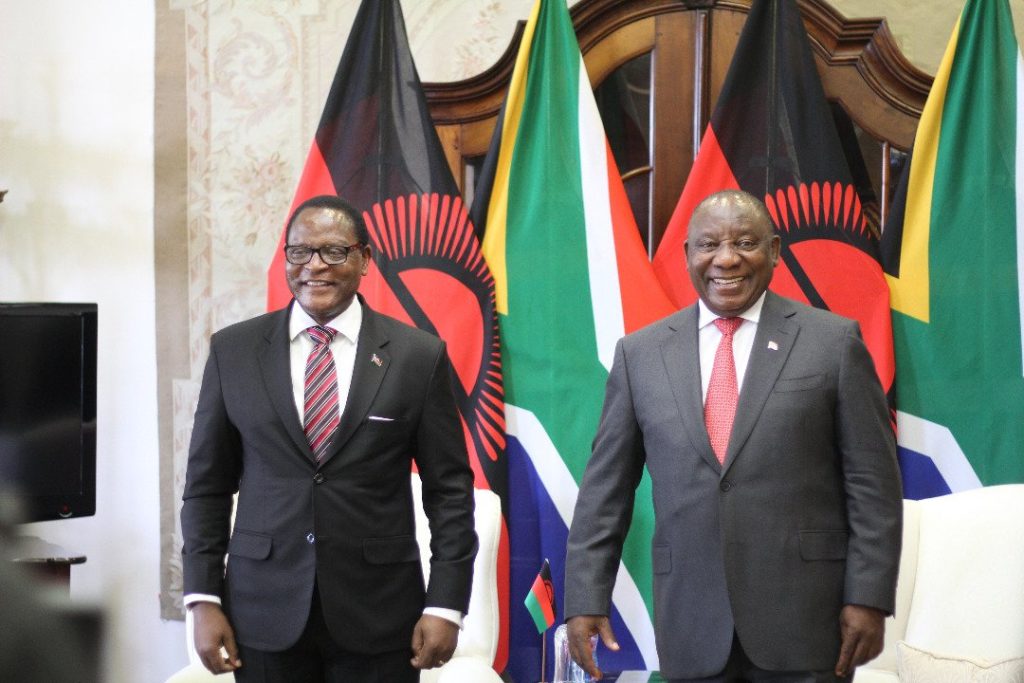
Business
“Buy Malawi” can build on Africa’s trade networks
December 06, 2021 / Charles Mkula

With about 40 percent of Malawi’s export potential laying in neighbouring countries in the Southern Africa Development Community (SADC), Malawi has the potential to ignite a trade-led growth by manufacturing and adding value to products along various agricultural and mineral resource value chains.
To achieve this, the Buy Malawi Strategy (BMS), an initiative that encourages local business competition through the production and sale of local products, can take advantage and capitalize on existing trade networks across the continent.
According to the strategy, the agriculture value chain is the main component that is targeted for exploitation because of its significance to the country’s economy as a major driving force behind employment and exports. Other significant growth sectors with competitive advantage include mining, forestry, ICT, retail and wholesale, transport and warehousing.
The strategy, which dovetails into the African Continental Free Trade Area (AfCFTA) concept of creating a market of a combined GDP of US$3 trillion for African raw materials and finished goods to serve more than 1.2 billion people, has the potential to boost Malawi’s industralisation drive and consequently, the country’s economy.
Statistics indicate that for years, Malawi’s import bill has been growing while the trade deficient widened and foreign reserves declined due to the importation of various items such as fuel, drugs and raw materials for manufacturing.
Local experts believe that both the BMS and the AfCFTA facilities have the capacity to accelerate employment, empower and create wealth in Malawi through increased productivity and trade.
“If successfully implemented, the strategy will translate into job creation, increase in household incomes, higher national revenues and GDP growth and increased government spending on public services,” says Amos Tizora, Executive Director at the Circle for Integrated Community Development (CICOD). “The BMS and the AfCFTA) will contribute to reduction of poverty and transformation of people’s lives across Africa,” he adds.
Recently, President Lazarous Chakwera, who is also SADC chairperson, told the second Intra-African Trade Fair in Durban of the importance of advancing sustainable ways of manufacturing goods designed to have a positive impact on ordinary people’s lives.
Concurring, South Africa’s president, Cyril Ramaphosa said Africa should not provide employment and add value to other economies when its people are in poverty and conditions of under-development.
President Chakwera urged nations to create policies that would support Africa’s economic integration and strengthen industrialisation to make Africa the factory of the world.
The Intra-African Trade Fair is a key pillar of the AfCFTA. It gathered Africa’s political leaders who faced buyers and sellers from across the world to share trade, investment and market information as well as plans to support intra-African trade.
According to the Economic Commission for Africa, the AfCFTA agreement, signed by 54 of the AU’s 55 member states with Eritrea yet to join, has potential to increase intra-African trade by over 50 percent, while the World Bank projects that AfCFTA could add US$76 billion to the rest of the world in yearly income.
It is expected that the AfCFTA will boost intra-African export figures through the creation of a continental customs union; elimination of tariffs on 90 percent of intra-Africa goods; easing movement of capital and people between countries; facilitating external investment; and reducing non-tariff barriers.
Two of Malawi’s government ministries, Trade and Industry, architects of the BMS hope that the initiative “will substantially enhance competitiveness of local firms through stimulation of local production and growth.”































